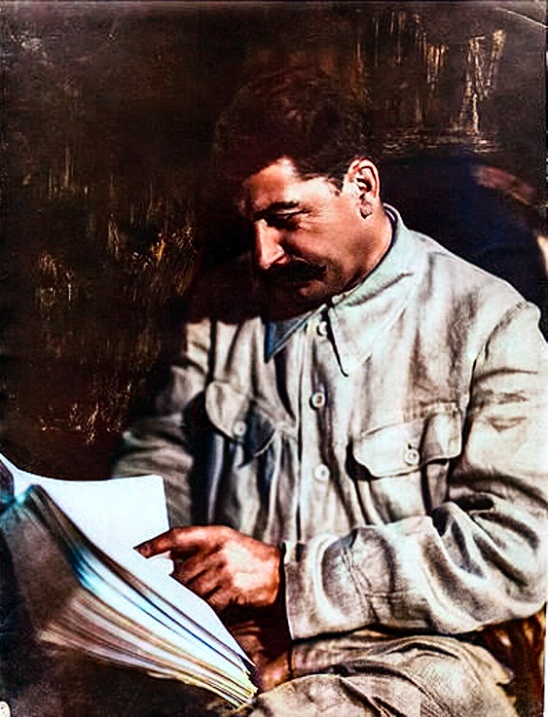RedWizard [he/him, comrade/them]
- 5 Posts
- 54 Comments

 2·1 month ago
2·1 month agoYeah I came here to say scratch.

 1·2 months ago
1·2 months agoLook into EMACS and Org-Mode, it can help you do just that.

 2·3 months ago
2·3 months agoThat’s not a meaningful distinction. Either way they should be using matrix or anything else.

 10·3 months ago
10·3 months agoSounds like its working as intended.

 10·3 months ago
10·3 months agoCowbee is river to their people!

 13·4 months ago
13·4 months agoBrother its been 20 years. You’re not stopping it now, especially not in this climate, with this administration. You’re daft if you think its something anyone cares about after 20 years of implementation. There are kids who were born when the law passed, whose first ID was a RealID, who are now working adults.

 2·4 months ago
2·4 months agoWindows Tiling is just having specific zones or regions defined on the screen where windows can be placed or configured to open in, correct?
I should try it out. There is a part of me that wonders if it would be worth it on a 1080p 15in laptop screen.

 7·5 months ago
7·5 months agoDoes California not have a legal personal growing law?

 13·6 months ago
13·6 months agoOne thing I always find amusing about these kinds of write-ups is how much the writer is desperately trying to replicate the Windows experience. It’s most exemplified in the section “Mission Center is the task manager you really need”. Half the issues mentioned in this section are effectively aesthetical, from what I can tell. Mission Center looks a hell of a lot like Task Manager. I almost skimmed past the screenshot without realizing it was not a screenshot of Task Manager.
This theme comes back again with the section on KDE: “So far, I like this KDE desktop better because it feels more like Windows 11 or Windows 10. There’s a Start menu and a taskbar at the bottom of the screen. The Start menu pops up as a small box, rather than taking over the whole screen like the Gnome menu did.”
I don’t own a Streamdeck, and I hear they’re really useful, but reading this section about Boatswain I really wonder what’s going on in the brains of the average computer “enthusiast” because if you’re only using the Streamdeck as a push button interface to launch Gmail of all things… I really want to question what, exactly, makes you a “computer enthusiast”. It also really exposes how little the writer seems to understand about “advanced” computer usage.
There’s no option to launch websites,
Yes, that makes sense. Since you can perform almost any task via the terminal, there seems little reason to have a “launch websites” function because…
but the workaround is to just but the command to launch your browser (in my case, google-chrome) in front of whatever URL you wish to launch.
You can just call your browser of choice using its command parameters. This isn’t a “work around”, this is base functionality of the software. I wonder if they understand that they could do this on Windows as well.
I wish this process were a little more seamless and you could get a menu of preinstalled apps to choose from or a dialog box that let you put in the website you want. But this is a process that works and, for that, I am thankful. Kudos to the makers of StreamController and shame on Elgato for not having a native Linux version of the Stream Deck app.
If you want to use Linux, then you should learn how to use Linux. Heck, it’ll even make you better at using other operating systems like Windows and macOS because what StreamController is forcing you to do here is learn how to execute applications via the command line.
I’m trying to find a good, free PDF editor where I can enter text on a medical form I have to fill out. I’ve tried five different editors and all seem to have issues that make it difficult or impossible to put text on top of the form. Very lame. Any suggestions?
Pretty sure both Chrome and Firefox can do this in the browser window. Maybe I’m wrong.
Anyway. The closing sections are interesting.
For example, StreamController allowed me to configure my Stream Deck Neo, but it’s not nearly as easy-to-use or powerful as Elgato’s own Stream Deck software.
What is the measure of “Powerful” here, exactly? StreamController features a plugin system where you can build your own actions using python and their code library, which the Stream Deck software also has. If you can launch an application like chrome and feed it parameters to open a specific website, then you can probably tell StreamController to launch a bash script that does a whole list of tasks for you and more. I guess you’d have to learn bash, though.
Community versions of software are a mixed blessing: There are community versions – apps made by independent developers – that fill the gap where first-party software lacks Linux versions. However, these are often made by volunteers who have other things to do and don’t have the kind of insight that would come from being part of the original hardware or software team. For example, AutoHotKey, a major macro app for Windows, is not available for Linux at all. There’s a community version called AHK_X11 but it still hasn’t been updated to work with the latest versions of Ubuntu, the most popular Linux flavor, because it’s incompatible with the Wayland window manager that Ubuntu uses.
I have to highlight this whole section because it is mind-boggling. “There are community versions – apps made by independent developers […] these are often made by volunteers […] and don’t have the kind of insight that would come from being part of the original hardware or software team. For example, AutoHotKey” AutoHotKey is FOSS! It’s maintained for free by a non-profit foundation. You can volunteer your time and submit a pull request on their GitHub page. This isn’t exactly the “first-party software” you’re talking about, and it also shows you’ve fully missed the point of what the Linux ecosystem is doing, and its foundational ethos.
This also makes me laugh a little because I wonder what exactly they were using AutoHotKey for? The most we get is: “I write AHK macros that select menu items you can’t get to with a hotkey in Google Docs or in Photoshop Elements or elsewhere”. If you desire a fully keyboard-driven experience, if that’s what sits at the heart of this AHK thing, let me introduce you to a little program called GNU Emacs.
Too many ways to install software
Again, fully missing the point here. If you desire a monopolized, centralized, authoritative experience where you are locked into the precise workflow as prescribed to you by private interests, then go back to Windows or MacOS. It is a fair critique once you’re well acquainted with the ecosystem, but it’s something that is only resolved through centralization and mass adoption of a single distribution method, and that is never going to happen.
Changing Desktop managers is too much work
I would say that’s a step up from having zero ability to change desktop managers but, who am I to say exactly?
Code editing: There are a lot of code editors. I still haven’t found one I like as much as Notepad++ which I use in Windows. Notepad++ will run using Wine emulation but on my home desktop, which uses scaling, the font is too small to read.
This shocks me a little. Even in the world of VSCode, people are still loyal to Notepad++? I mean, the options are infinite really, Notepad++ really hasn’t evolved in a long time. What exactly could Notepad++ be doing that can’t be replicated even with VSCode? I know that Notepad++ is at least less of a resource hog then something like VSCode but is that really a concern given the systems they’re using? VSCode isn’t even a great option, it’s just the most popular option with the most broad appeal and support. Again, you could be investigating things like Vi or Emacs.
Logi+
I have an MX Master mouse as well. I fucking hate the Logi+ bullshit, and it’s insane that you are allowed to create a mouse like the MX Master and lock all its functionality behind software that wants to run all the time in the background, and phone home to Logitech with “telemetry data” for “enhancing user experience”. I shouldn’t have to have privacy concerns regarding the mouse I use on my computer. I’m glad Logi+ doesn’t exist on Linux. When you set up the device on Windows it tries to automatically install the Logi+ software, it should be considered a virus at this point. I had to wipe my work computer recently, and uninstalled Logi+ after Windows was up and running again, and actually just used AutoHotKey to remap the side button on the mouse. Out of the box, all the button does is emulate a WIN+TAB keyboard command, which I intercept and change to Win+CTRL+S which launches screen capture.
Phone Link:
God only knows what Windows is doing with all the information it is nabbing off your device while connected to their operating system. “These work, but their UI looks very primitive in comparison to what you get from Microsoft.” Again, aesthetics.
I really like Linux and, if it had just a little bit better support for the hardware and software I rely on, I could see myself switching to it for 90 or 100% of my daily usage. As of now, though, I’ll still be using Windows, at least some of the time.
It’s funny that they walk away with a positive experience, yet the real takeaway is that “it’s not enough like windows”. Learn Linux. Learn it for real, and you’ll never need whatever you’re missing from Windows. Decolonize your brain from decades of Windows lock in. You’ll be better for it.

 1·7 months ago
1·7 months agoEdit all your posts then request a purge.

 8·7 months ago
8·7 months agohttps://f-droid.org/en/packages/org.isoron.uhabits/
Loop Habit Tracker is an app I’ve been using for years now to help me maintain daily, weekly, and monthly routines. I find it’s “sticky” notifications very useful.

 1·7 months ago
1·7 months agoThis looks a lot like Loop Habit Tracker which, in my experience with the app, works differently than Better Counter. BC is like a digital click counter, allowing you to tabulate things by quantity whenever they happen. Loop Habit Tracker doesn’t really have a feature like that. If you wanted to track how many cups of water you drank in a day, you would need to remember how many you had and enter it manually every day. Loop Habit Tracker is designed to help you build daily, weekly, or monthly habits with handy and difficult to dismiss reminders.

 2·7 months ago
2·7 months agoDoes the export have a timestamp attached?

 2·7 months ago
2·7 months agoOk I’ve spent a few hours now tinkering and figuring things out, and I totally see the power here. I wanted to install the 1password Linux application and discovered I could do it easily using distrobox, and I wouldn’t even know that’s how it was running considering the GUI experience is the same as if I had installed it directly on the system.
Very cool. It’s a little to bad the gaming experience isn’t great, but this is a 8 year old laptop with intel UHD graphics, so not shocked really. Windows gets better performance naturally.

 3·7 months ago
3·7 months agohuh, very interesting. I think I’ll give Bazzite a shot and see how it goes. I have an T490 kicking around, but it only has the Intel UHD graphics (no NVIDA Mobile chip, sadly), but on Windows it could handle some gaming. So, I’ll be curious to see how it works out. The Bazzite site says it doesn’t support the “Steam Gaming Mode”, which just means the steam big picture mode.

 2·7 months ago
2·7 months agoYour user configs and home files are never changed when you ‘image hop’.
So I have an older Lenovo Laptop that I’m looking to put Linux on to replace an even older Lenovo Laptop I currently have Linux on, and this bit really has me curious about Fedora Atomic. I’m only learning about it now through this post.
I have intermediate experience with Linux, as it’s not my daily driver, how far into the deep end would I be plunging if I gave Fedora Atomic a try?








Looks like microwave wifi.